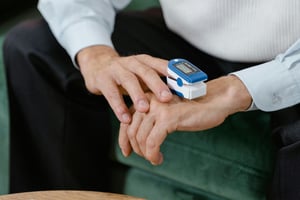
Remote Patient Monitoring: 7 Key Benefits
Remote patient monitoring (RPM) has emerged as a game-changer in the healthcare industry, offering numerous advantages that can revolutionize the way medical care is delivered. With the advancement of technology and the increasing popularity of telehealth services, RPM has gained significant attention and is being embraced by healthcare providers worldwide. As we delve deeper into the topic, we will uncover even more ways in which remote patient monitoring is reshaping the healthcare landscape. So, let's explore the potential of RPM and how it holds the key to transforming healthcare as we know it.
What is Remote Patient Monitoring?
Remote Patient Monitoring (RPM) is a healthcare practice that uses technology to collect and transmit patient medical data remotely. It typically involves the use of medical devices, such as wearable sensors, smart devices, and mobile apps, to track and record data, including heart rate, blood pressure, glucose levels, and more. This real time monitoring is securely transmitted to healthcare providers, enabling continuous data gathering, early issue detection, and proactive healthcare management without frequent in-person visits. The result? RPM improves patient care, reduces hospitalizations, and enhances overall healthcare outcomes.
The Importance of Remote Healthcare Monitoring
The adoption of remote patient monitoring has witnessed substantial growth in recent years. Let's delve into the numbers: A survey conducted by the Spyglass Consulting Group unveiled remarkable findings. It reported that a staggering 88% of healthcare providers who embraced remote patient monitoring witnessed tangible enhancements in patient outcomes. Furthermore, an impressive 72% reported a notable decline in hospital readmissions, while 76% documented a significant reduction in emergency room visits. These statistics underscore the pivotal role that remote patient monitoring plays in improving healthcare efficiency and patient well-being.
Remote Patient Monitoring Benefits
Remote healthcare monitoring has many technological advantages. Let's take a closer look at them:
- Real Time Monitoring from Home: One of the primary advantages of RPM is its ability to provide real-time monitoring of patients' vital signs and health data from the comfort of their own homes. This enables healthcare professionals to monitor and manage chronic conditions more effectively, reducing the need for frequent hospital visits and improving overall patient care.
- Key Metrics Tracking: With remote patient monitoring, healthcare providers can track key health metrics such as blood pressure, heart rate, blood glucose levels, and medication adherence. This data can help identify trends, patterns, or deviations from the norm, allowing for timely interventions and adjustments to treatment plans.
- Reduced Travelling Time: Patients also benefit from the convenience of remote monitoring. They no longer have to travel long distances or wait in crowded waiting rooms for routine check-ups. RPM allows them to stay in the comfort of their own homes while still receiving high-quality care.
- Cost Savings: Remote patient monitoring can significantly reduce healthcare costs by preventing unnecessary hospitalizations and emergency room visits. Patients can avoid costly hospital stays, while payers can reduce healthcare expenditures by promoting preventive care and early intervention.
- Early Detection and Prevention of Diseases: Hospital readmissions due to avoidable complications are a significant burden on healthcare systems. With remote patient monitoring, healthcare professionals can detect warning signs and intervene before a patient's condition worsens, reducing the likelihood of readmission.
- Technology on your Side: Regular check-ups and monitoring may sound easy, yet for some patients it’s a real challenge. There is no need to leave the house for remote patient control: with Eyeson’s multi-source video call you get to have a consultation while being able to pull all the resources you need on one screen. You can find more details here.
- It’s the Future: As technology continues to evolve, remote patient monitoring holds the key to a future where healthcare is more accessible, personalized, and efficient. Its ability to provide real-time monitoring, engage patients in their own care, and prevent complications makes it a valuable tool in the healthcare ecosystem. Some of the companies have already adopted this approach. Are you one of them?
Performance In Action
Discover the performance of Eyeson's Telehealth solution in action:

Remote patient monitoring benefits are even more significant than you might think. With Eyeson’s ability to merge multiple sources into one video, you get peer-to-peer video, deep integration into EMR, full patient demographics and many more just on one call. By leveraging this, you can tailor treatment plans to individual patients, leading to better outcomes and improved quality of life. Request a demo to know more.
Conclusion
With getting to know what is remote patient monitoring, it's clear that its future appears bright, holding the promise of better patient outcomes, expanded healthcare accessibility, and lowered medical expenses. As technology progresses, RPM is expected to become a fundamental component of healthcare delivery, revolutionizing the provision of medical care and enhancing the overall patient journey. Get ready to be a part of this transformative evolution.